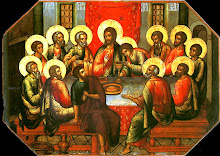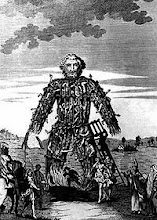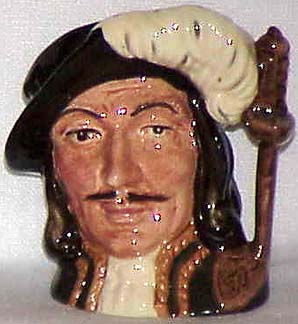 Ibn Warraq at City Journal:
Ibn Warraq at City Journal:Tu QuoqueOn Islam and the CrusadesOften, when I am criticizing crimes inspired by Islamic extremism, I am interrupted by the remark that Christianity was once culpable of similar abuses. That Christianity may have been intolerant in the past, however, does not make criticisms of Islam’s present-day intolerance any less valid. Also, Islamic intolerance is an immediate danger, whereas Christian intolerance is generally a historical phenomenon and no longer a threat to civilization. And Christendom’s crimes were recorded by Christians themselves—a stark contrast to our politically correct climate, in which many, especially Muslims, are reluctant to criticize Islam.
Still, one might point out Christianity’s historical shortcomings in order to avoid demonizing Islam alone. But this principle should work both ways: we should also avoid demonizing Christianity and be prepared to point out Islam’s shortcomings. In December 2008, Boris Johnson, mayor of London, presented a biased BBC program on the Crusades that laid the blame for them entirely on Christians. The program pointed out that after expelling the Moors from Spain, Christians converted a mosque into a church—an act of “vandalism.” However, it failed to note that the Crusades were a reaction against over 300 years of jihad and persecution of Eastern Christians, during which Muslims destroyed hundreds of churches and converted many others into mosques, including the magnificent Byzantine church Hagia Sophia.
Consider the situation in the Holy Land 100 years before Pope Urban II’s call in 1095 for a crusade to liberate it. It was part of the territory ruled by the Fatimid Caliph al-Hakim, whose cruelties Christian and Muslim historians alike recorded. Fourteenth-century historian Ibn al-Dawadari tells us that al-Hakim destroyed the Church of Saint Mark in al-Fustat, Egypt (on the outskirts of modern-day Cairo), which Christians had built in defiance of a law forbidding new church construction. The al-Rashida mosque arose not only over the ruins of Saint Mark’s but also over Jewish and Christian cemeteries, surely an act of vandalism. But the height of al-Hakim’s cruelties was the destruction of the Church of the Holy Sepulchre, which, according to Muslim sources, began in September 1007. Also known as the Church of the Resurrection, this was possibly the most revered shrine in Christendom—considered not only Golgotha (or Calvary), where the New Testament says that Jesus was crucified, but also the place where he was buried and hence the site of the Resurrection. According to historian Moshe Gil, al-Hakim ordered that the Church of the Resurrection be torn down “to its very foundations, apart from what could not be destroyed or pulled up, and they also destroyed the Golgotha and the Church of Saint Constantine and all that they contained, as well as all the sacred gravestones. They even tried to dig up the graves and wipe out all traces of their existence.”
A new generation of Western medieval scholars has tried to rectify misconceptions about the Crusades. Historian Jonathan Riley-Smith has pointed out that “modern Western public opinion, Arab nationalism, and Pan-Islamism all share perceptions of crusading that have more to do with nineteenth-century European imperialism than with actuality.” Muslims, in particular, have developed what Riley-Smith calls “mythistories” concerning the putative injuries that they received at the crusaders’ hands. This is not to deny, of course, that the crusaders were responsible for outrages, including what is sometimes called the First Holocaust—the massacres of Jews that began in Worms on May 18, 1096, and continued into Mainz, where the Jewish community, one of the largest in Europe, was decimated. It is rather to say that the Crusades are misunderstood on multiple levels.
For one thing, they were not exclusively concerned with combating Islam. Pagan Wends, Balts, and Lithuanians; shamanist Mongols; Orthodox Russians and Greeks; Cathar and Hussite heretics; and those Catholics whom the Church perceived as its enemies—all were targets of the broader mission to extirpate heresy.
Nor were the Crusades “thoughtless explosions of barbarism,” as Riley-Smith accurately characterizes their reputation today. They had a sophisticated underlying rationale, elaborated theologically by Christian nations threatened by Muslim invaders who had managed to reach into the heart of Europe—from central France in the eighth century to Vienna in the sixteenth and seventeenth centuries. They were a response to the desecration of Christian shrines in the Holy Land, the destruction of churches there, and the general persecution of Christians in the Near East. A Crusade had to fulfill strict criteria for the Church to consider it legitimate and just. It had to be waged for purposes of repelling violence or injury, with the goal of imposing justice on wrongdoers. A Crusade was not to be a war of conversion but rather a rightful attempt to recover unjustly seized Christian territory..MORE>>








No comments:
Post a Comment